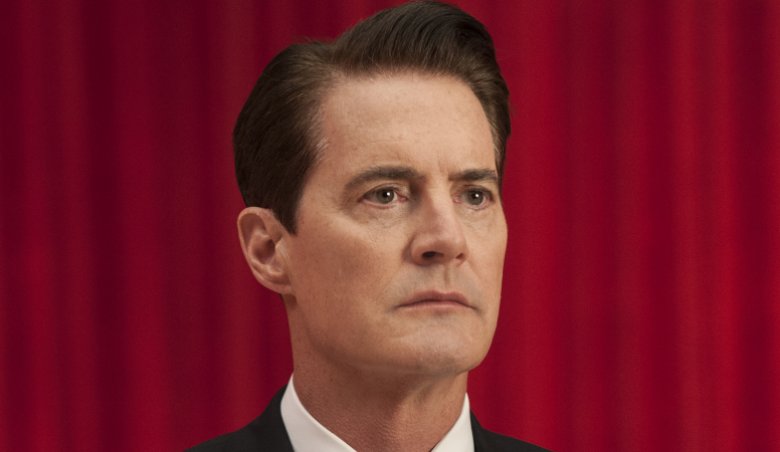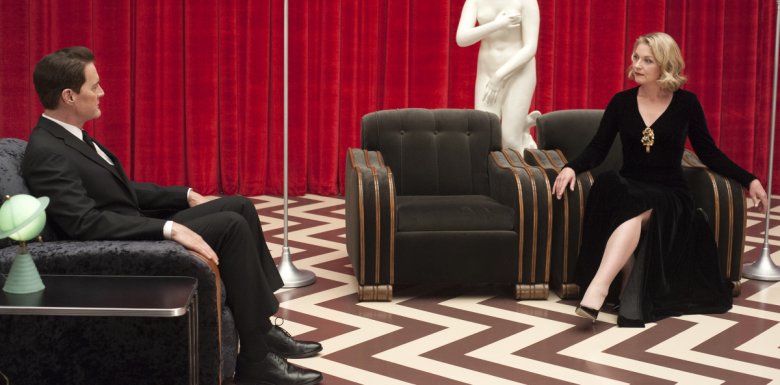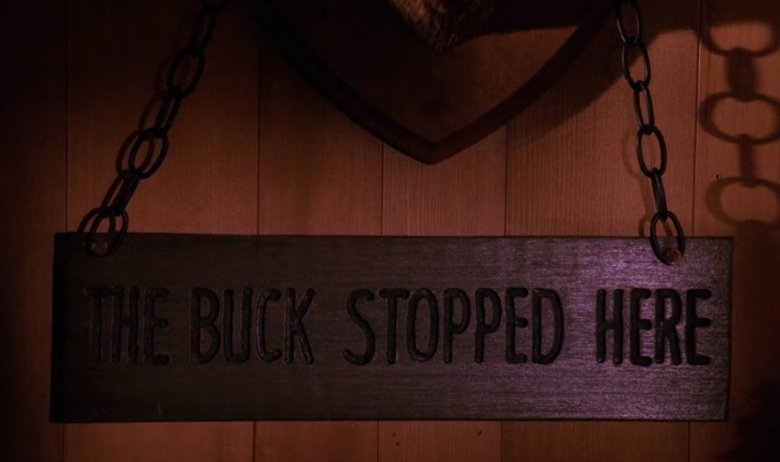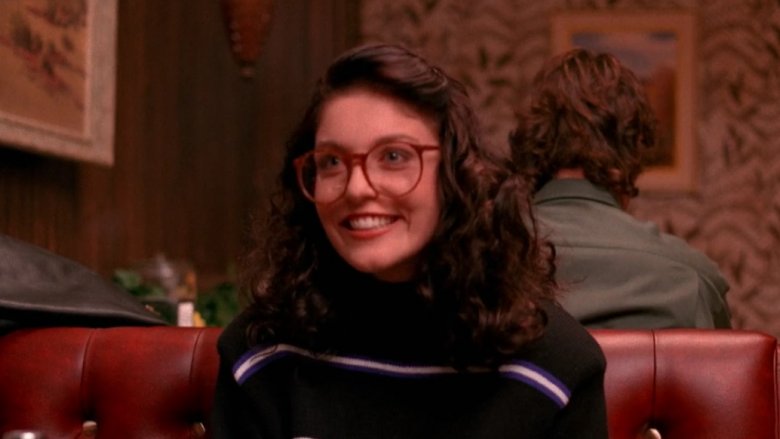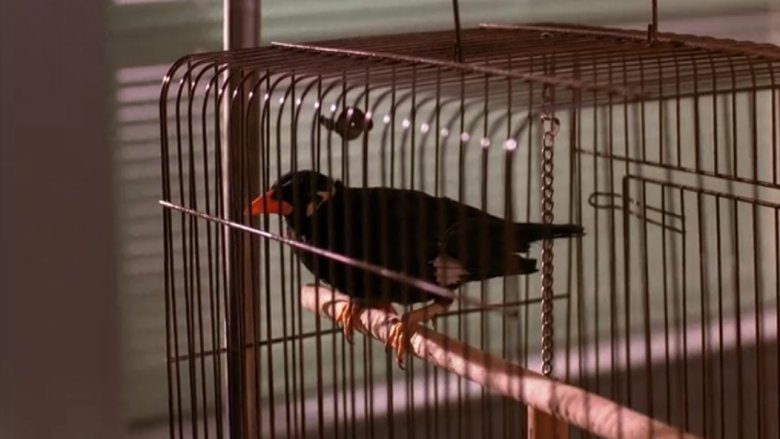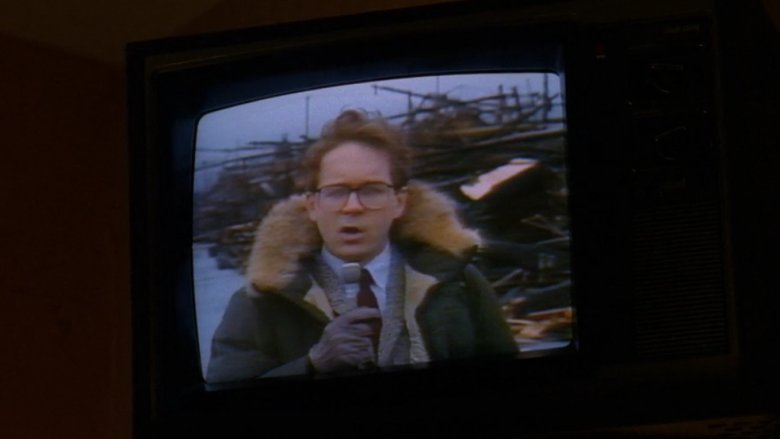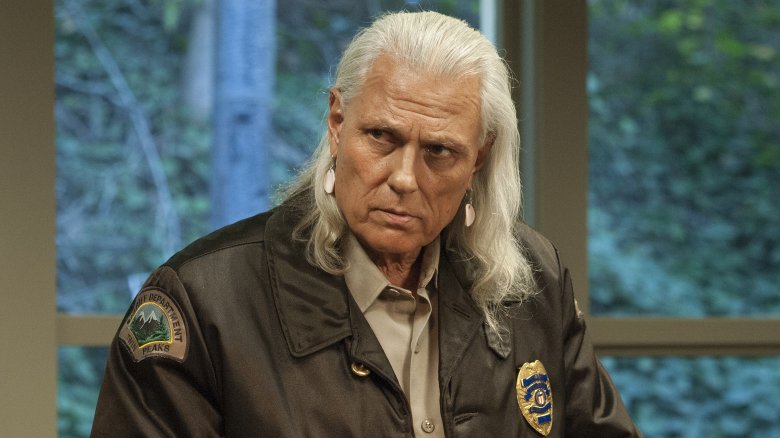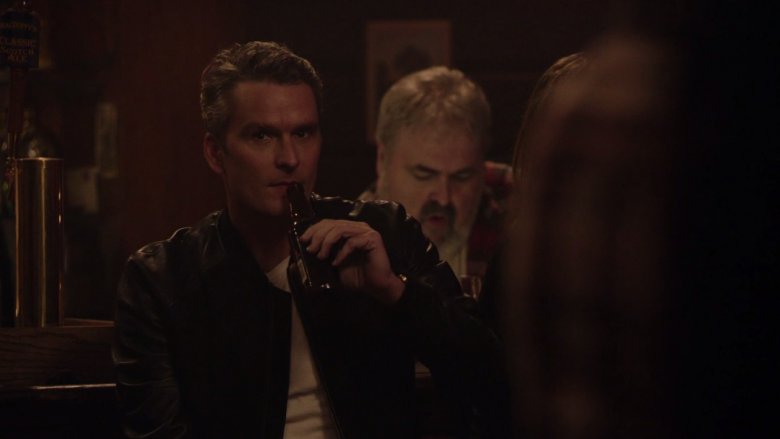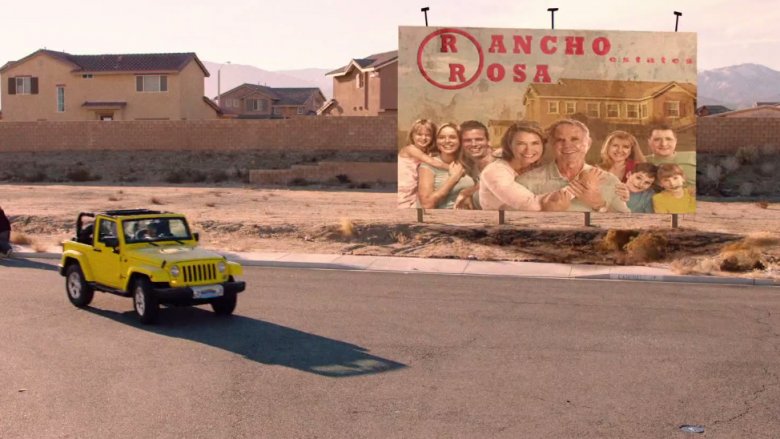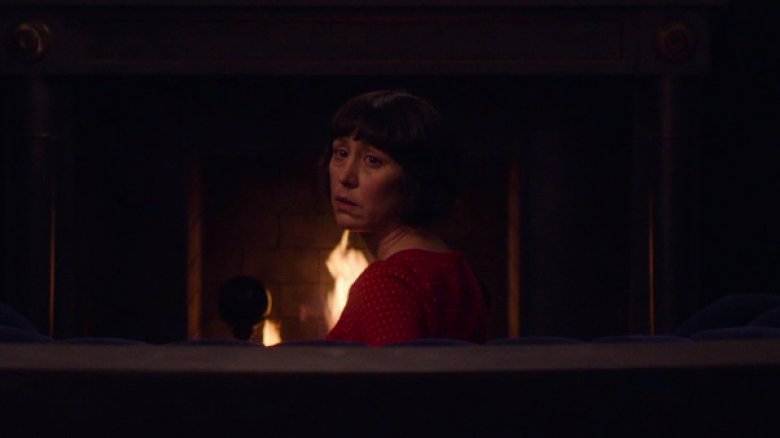Easter Eggs You Missed In Twin Peaks
It isn't uncommon for seasoned directors to hide Easter eggs in film and television—and the works of David Lynch are no exception. From recurring motifs to surprising cameos, Lynch has expertly inserted a number of hidden treasures into the world of Twin Peaks, but it can hard to figure out what's fan service and what's canon. Often, with Lynch, it's both. Here are a few Twin Peaks Easter eggs to keep an eye out for.
The Black Lodge floor
One of Twin Peaks' most memorable visuals is the black and white chevron floor in the Black Lodge. But the iconic pattern wasn't an original set choice for the '90s show. The black and white flooring actually appeared in Lynch's previous work, the 1977 film Eraserhead—a movie starring the late Jack Nance, who'd go on to play the lovable Pete Martell in Twin Peaks.
The zig-zag design can also be spotted on the jacket of Leland Palmer, a character portrayed by the incomparable Ray Wise—so obviously, Lynch is a big fan of motif.
Harry S. Truman's sign
The town of Twin Peaks is guarded by the diligent Sheriff Harry S. Truman. Yep, you read that right—he shares a name with the 33rd president of the United States. Lynch and his team have had their share of fun referencing Truman's namesake. During his term as president, the real-life Truman famously decorated his desk with a sign that read, "The buck stops here." Fictional Truman, on the other hand, displayed a similar sign on his office wall, but it features just one small change: verb tense. Hanging below the head of a taxidermied deer, the decorative plaque read, "The buck stopped here."
Maddy Ferguson's hometown
When Laura Palmer's near-identical cousin strolled into town, she brought with her more than just a cool pair of red glasses. Maddy Ferguson (played by Sheryl Lee) also managed to slip an Easter egg into a conversation at R & R Diner. Speaking with James Hurley, Maddy said she was from Missoula, Montana—a hometown she happens to share with none other than Lynch himself. Though he's rather private about his personal life, the one-of-a-kind director has talked about his Missoula routes before, most notably in his 2007 book, Catching the Big Fish: Meditation, Consciousness, and Creativity. In it, Lynch refers to himself as "just a guy from Missoula, Montana" (via Missoula Independent).
Lynch even brings a little of the midwestern town to the small screen himself, keeping his natural accent—described by The New York Times as a "flat folksy accent of his native Missoula, Mont."—as he took on the character of FBI Regional Bureau Chief Gordon Cole.
Waldo the bird
Lynch didn't just borrow President Truman's moniker for the show. He also named a resident bird after a character from a classic film noir. The myna bird, who's able to repeat short phrases and words, was named Waldo—and, when you combine it with the last name of his guardian veterinarian, Dr. Lydecker, the tiny feathered friend boasts the full title Waldo Lydecker.
Who was the original Waldo Lydecker? He was a wealthy reporter in the 1944 mystery—wait for it—Laura. Yes, Laura. Everything comes full circle. What's more, Laura tells the story of a detective who's trying to deduce who killed the titular victim—a woman known to unintentionally make men fall in love with her. Sound familiar?
Mark Frost cameo
While Lynch may be well known as the architect of Twin Peaks, he had help creating the series from writer Mark Frost. And, as show creators often do (looking at you, Stan Lee), Frost made a quick cameo in his own production. But only eagle-eyed viewers may be able to spot him. Frost played a TV reporter, covering the news of the Packard Sawmill fire.
But be warned, his part's small, so if you want to catch a glimpse of the Twin Peaks co-creator, it's best not to get up for a snack during the first episode of season two.
Deputy Hawk to the rescue
There weren't too many officers in Twin Peaks' police force in seasons one and two, but the few they had—that viewers got to know, at least—were dependable men, especially Deputy Hawk. Hawk, while often quiet and reflective, was always around to lend a helping hand to Agent Dale Cooper or the rest of the Sheriff's department, and Cooper was quick to realize Hawk's value. "Hawk, if I ever get lost," Cooper told him during their first meeting, "I hope you're the man they send to find me."
Fast-forward 25 years—okay, technically 27 years—and Hawk is attempting to do just that: find Cooper. While we can't say for sure that Lynch and Frost planted that line of dialogue to foreshadow a future plot point, we wouldn't put it past the co-creators to review their earlier work and write new scenes accordingly.
The late Jacques Renault reappears
The Canadian criminal may have been offed in season two of Twin Peaks, but that didn't stop the actor that played him, Walter Olkewicz, from making an appearance in the 2017 Showtime revival. In the background of one of the final scenes of episode one, Olkewicz can be seen by the bar at the Roadhouse, otherwise known as the Bang Bang Bar. Fitting, since he used to work as the establishment's bartender—when he wasn't transporting cocaine across the border or dealing cards at One-Eyed Jack's, that is.
But, of course, Olkewicz couldn't return as his original character. Instead, he's credited as portraying Jean-Michel Renault. No word yet on just how Olkewicz's two characters are related—and we kind of doubt we'll ever find out. The actor's reportedly only in the one scene, something he said took just one quick shot. "I did it in one take and got uproarious applause," Olkewicz told NJ.com. "It's like riding a bike."
Rancho Rosa
After Cooper replaced his double Dougie, prostitute Jade gave him a ride out of the development of new houses. On their way to a casino, they passed a billboard featuring a group of smiling families that read, "Rancho Rosa estates." Rancho Rosa is the name of the production company behind Twin Peaks' third season. Its logo is even the same as the one plastered on the large sign—two R's surrounded by a circle.
Ronette Pulaski's dopplegänger
Phoebe Augustine, who played high school student-turned-prostitute Ronette Pulaski, headed back to the set of Twin Peaks for the third episode of the show's third season, but she didn't resume playing her tragic character. Instead, she took on the new role of "American Girl," an otherworldly being Cooper finds in the Purple Room. This new character—who, as far as we know, has no relation to Pulaski—offered Cooper a little guidance, ultimately instructing him to travel back to his world through a light socket.
But don't feel bad if you didn't recognize the actress. She sported an entirely new look, topped off with a neat, short bob rather than Pulaski's usual messy, long mane. Plus, you know, it's been 27 years, and Pulaski was in a coma for most of the original series' run anyway.
